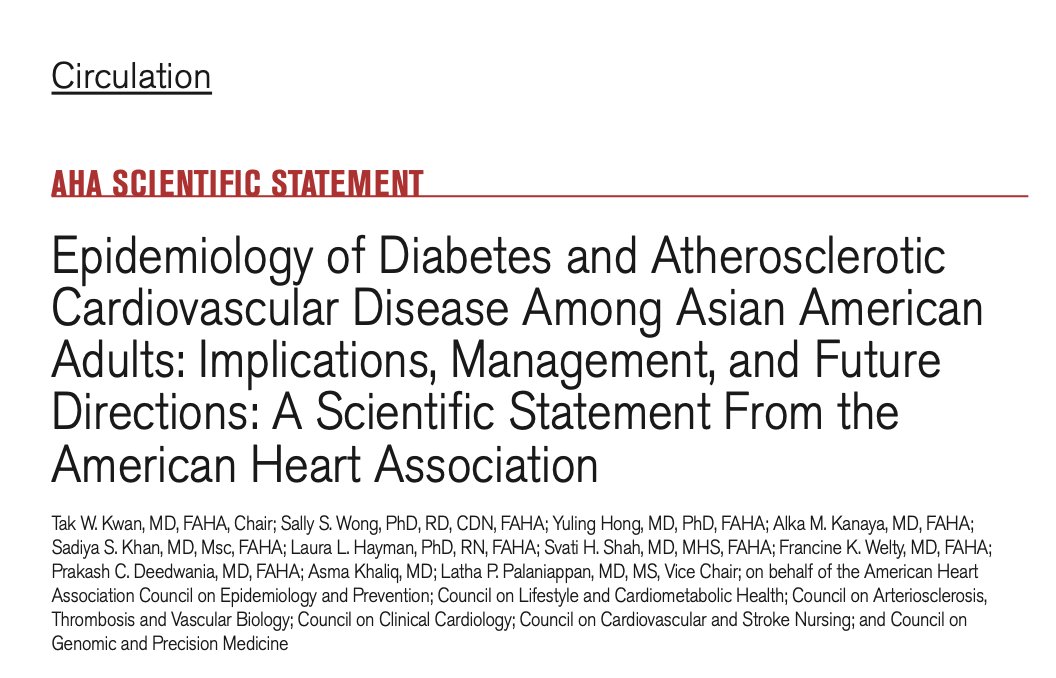Hierarchical Development of Physical Frailty and Cognitive Impairment and Their Association With Incident Cardiovascular Disease: @JACCJournals @NailaIjaz_MD
This analysis evaluated the timing of developing cognitive impairment & frailty in pts at risk for CAD!!
Summary 👇👇
This analysis evaluated the timing of developing cognitive impairment & frailty in pts at risk for CAD!!
Summary 👇👇

1/ In this @JACCJournals study, we examined the patterns of frailty and cognitive impairment (CI) development and their associations with cardiovascular outcomes in older adults without prior known coronary artery disease (CAD) during a 5-year follow-up. 🧠❤️
#NHATS
#NHATS
2/ We found that the highest proportion of participants (37.8%) developed cognitive frailty first, followed by those who developed a combination of physical and cognitive frailty (8.9%), and then those who developed only physical frailty (7.0%). 📈🚶♂️
#aging
#aging
3/ Participants who developed both CI and frailty simultaneously were older and had a higher prevalence of multiple chronic conditions and baseline disability compared to the other groups. 👵🏽🩺
#GeriatricSyndromes
#GeriatricSyndromes
4/ Compared to participants who developed frailty or CI first, those who developed simultaneous CI and frailty had a higher risk of developing major adverse cardiac events (MACEs) at 5-year follow-up, mostly attributed to mortality. ⚠️💔 #CardiovascularRisk 

5/ The study confirms that CI, both with frailty and independent of frailty, was associated with a higher incidence of adverse cardiac events and mortality than those without CI.
🧠🚑 #CognitiveImpairment
🧠🚑 #CognitiveImpairment

6/ CI can cause difficulties in managing cardiovascular risk factors, poor dietary habits, and overall worse physical health, leading to an increased likelihood for adverse cardiovascular outcomes and mortality.
🏥 #compliance
🏥 #compliance
7/ The study suggests that integrating screening tools for geriatric conditions in cardiovascular practice could identify patients who may benefit from interventions that address geriatric risks and modify the approach for cardiovascular therapies. 📋👩⚕️ #prevention
8/ Gaps in knowledge: Effective interventions to prevent and reverse geriatric risks in context of cardiovascular illness.
Geriatric conditions may be EMM in the association between therapeutics and CV outcomes.
Geriatric conditions may be EMM in the association between therapeutics and CV outcomes.
Few more additional info for those interested:
9/ 🎯 Study aims: To evaluate incidence of CI & frailty, examine patterns & assess their influence on MACE 📚💡
9/ 🎯 Study aims: To evaluate incidence of CI & frailty, examine patterns & assess their influence on MACE 📚💡
10/
🔬 We Analyzed the 2011 NHATS baseline cohort data
📚 NHATS: Prospective study focusing on older patients' functioning 🧓🚶♀️
🔬 We Analyzed the 2011 NHATS baseline cohort data
📚 NHATS: Prospective study focusing on older patients' functioning 🧓🚶♀️
11/📋🎯 Study population:
Age ≥ 65, no history of CAD before 2011 NHATS baseline visit 📏
💡 Exposure categories:
1) Intact
2) Frail first
3) CI first
4) Frail-CI 📋
Age ≥ 65, no history of CAD before 2011 NHATS baseline visit 📏
💡 Exposure categories:
1) Intact
2) Frail first
3) CI first
4) Frail-CI 📋
12/ 🔄 We evaluated the temporal association between physical frailty, cognitive function & incident CVD in NHATS study ⏳🔁
13/ 🔍 Definitions 📚
🤲 Physical frailty: vulnerability to stressors, decline in reserve & function across multiple systems 📉
🧠 CI: cognitive vulnerability, higher risk of developing dementia 🌪️🚩
🤲 Physical frailty: vulnerability to stressors, decline in reserve & function across multiple systems 📉
🧠 CI: cognitive vulnerability, higher risk of developing dementia 🌪️🚩
14/ 🎯 Study outcomes:
1️⃣ Time to first incident MACE (death, AMI, coronary heart disease, stroke, peripheral vascular disease) ⏰💔
2️⃣ Assessing geriatric risks: functioning, ADL, IADL, disability, mobility disability 🧓🏃♂️
1️⃣ Time to first incident MACE (death, AMI, coronary heart disease, stroke, peripheral vascular disease) ⏰💔
2️⃣ Assessing geriatric risks: functioning, ADL, IADL, disability, mobility disability 🧓🏃♂️
15/📈 RESULTS 📉
👥 2,189 NHATS participants:
1,011 (46%): Intact (no frailty or CI)
154 (7%): Frailty-first
829 (38%): CI-first
195 (9%): Frailty-CI co-occurrence
📋 Baseline data:
Mean age: 77.5 years
61%: ≥75 years old
62%: Female
Majority: White/Caucasian
👥 2,189 NHATS participants:
1,011 (46%): Intact (no frailty or CI)
154 (7%): Frailty-first
829 (38%): CI-first
195 (9%): Frailty-CI co-occurrence
📋 Baseline data:
Mean age: 77.5 years
61%: ≥75 years old
62%: Female
Majority: White/Caucasian
16/ 📊 Frailty-CI group (highest risk):
Older, more females, ethnic minorities
More help in self-care, mobility, household activities
Higher rate of disability
Older, more females, ethnic minorities
More help in self-care, mobility, household activities
Higher rate of disability
17/ 📉 5-year follow-up:
25% died
59% had MACE (30% CAD)
Frail-CI: highest all-cause mortality (60%), MACE (87%)
Frail-CI: highest PVD (40%), CAD (40%)
Frail-first: highest AMI (11%), stroke (29%)
25% died
59% had MACE (30% CAD)
Frail-CI: highest all-cause mortality (60%), MACE (87%)
Frail-CI: highest PVD (40%), CAD (40%)
Frail-first: highest AMI (11%), stroke (29%)
18/ 🔍
Adjusted analysis:
Frailty, CI or both associated with greater risk of MACE, death
Frail-CI: higher risk of AMI
Frail-first: higher risk of stroke
CI-first & frail-CI: no longer associated with stroke risk

Adjusted analysis:
Frailty, CI or both associated with greater risk of MACE, death
Frail-CI: higher risk of AMI
Frail-first: higher risk of stroke
CI-first & frail-CI: no longer associated with stroke risk


19/ Of course many thanks to my friends and co-investigators for their help in making this work more mature: @RaniKHasan @DrAROrkaby @Ajar_Kochar @MichaelGNanna; and the great @JeremyWalstonMD (others not on twitter)
Full manuscript on @JACCJournals 👇👇
authors.elsevier.com/sd/article/S27…
Full manuscript on @JACCJournals 👇👇
authors.elsevier.com/sd/article/S27…
20/ What is next?
A new SOA by this research team led by @NailaIjaz_MD expanding on our understanding of cognitive frailty in the context of CVD.
Dr Ijaz is a🌟
A new SOA by this research team led by @NailaIjaz_MD expanding on our understanding of cognitive frailty in the context of CVD.
Dr Ijaz is a🌟
• • •
Missing some Tweet in this thread? You can try to
force a refresh

 Read on Twitter
Read on Twitter










